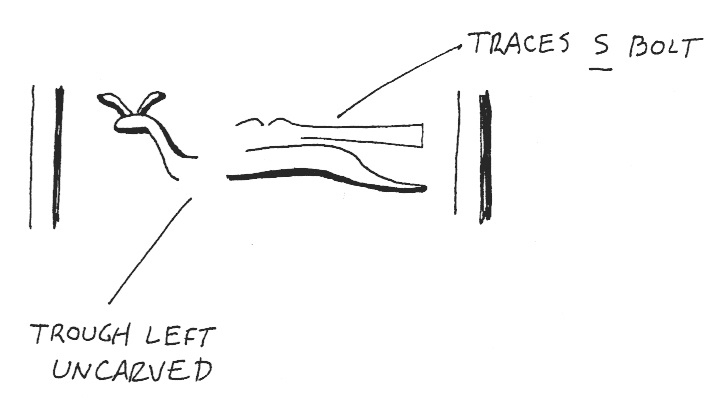Digital Epigraphy (Second Edition)
Chapter 2 – Drawing Conventions
Chapter 2, Section 5 - Recut or Restored Figures and Inscriptions
Written by W. R. Johnson, M. De Jong, S. Osgood, and K. Vértes
Hatshepsut figures, cartouches, and text, recut by Thutmose III, and deity figures hacked by Atenists and later restored:
At Medinet Habu there are areas recut by Thutmose III where signs and other elements are found inside scooped-out areas where Hatshepsut's original carvings were removed, and where Atenist-hacked deities and inscriptions were smoothed back and recarved within similar depressions.
The final lines are rendered as sun and shadow, while any traces of the original decoration are rendered in trace weight line (6x0/.13):
- when hieroglyphs have been erased and/or recarved
- when interior surfaces of cartouches have been taken back and the names recut
- when figures of Hatshepsut have been erased and recarved into offering piles
- when figures of deities have been hacked by the Atenists and subsequently restored
The depth of the final surface (the scooped-out area) should not be indicated on the drawings; it should be treated as the final surface or surface preparation and left blank.
Uncarved Areas:
Any portion of the decoration which is absent because of chisel blows, smoothing, etc. made while taking back the stone for recarving is shown as uncarved.
For example, if Thutmose III erased a bolt “s” in an inscription, and replaced it with a viper “f”, and one of the chisel blows used to remove the “s” was very deep, and a portion of the viper skips over this area (probably having been added in plaster), the area of the trough of the deep chisel blow which contains no line of the final Thutmose III carving is shown in the drawing as an uncarved area.

Similarly, if the carved line of a restored deity is interrupted by a deep chisel mark that was originally filled with plaster and carved, but has subsequently fallen away, the area where the line is interrupted by the Atenist chisel blows should be left blank.
%20-%20Drawing%20by%20Heidel%2C%20Johnson%2C%20and%20Osgood.jpg)
MHB 61 (detail) - Drawing by Heidel, Johnson, and Osgood
Post-antique period hacking:
Post-antique period hacking of figures (particularly faces and limbs) should be indicated by the artist.
If chisel marks were made with a view towards intentionally destroying or mutilating a figure without the intent to rework that figure in any way, such chisel marks within figures should be drawn by the artist, even when they don’t actually interrupt a carved line.
%20-%20Drawing%20by%20di%20Cerbo%20and%20V%C3%A9rtes.jpg)
MHB 84 (detail) - Drawing by di Cerbo and Vértes
*All the explanatory drawings appearing in this article are drawn by W. R. Johnson and M. De Jong and the property of the Epigraphic Survey © All rights reserved.



0 comment(s)
Leave a comment(We'll keep your email address private)